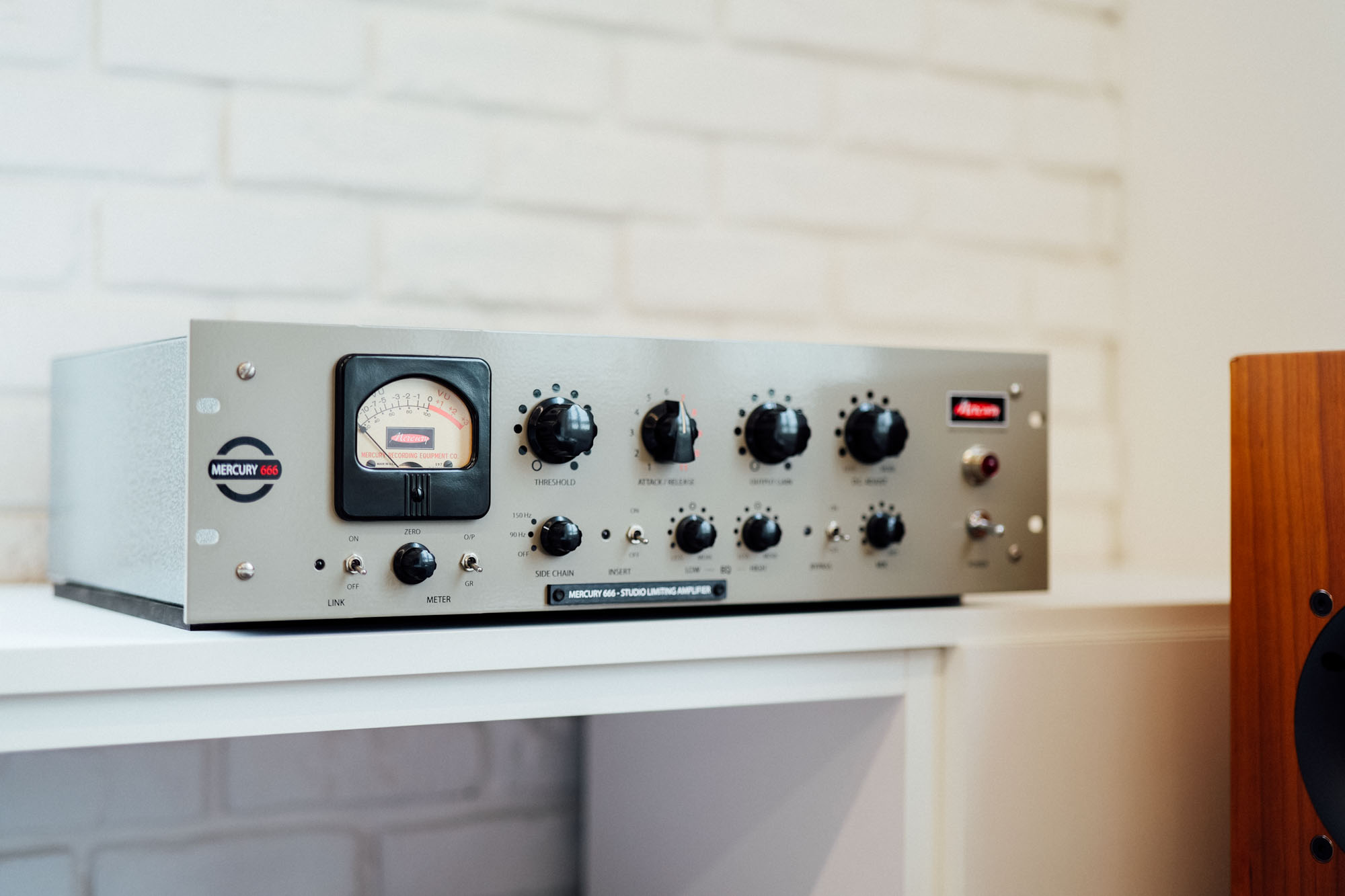
When it comes to compressors, there’s none more so revered than the Fairchild 670. Its status as one of the most iconic and prized pieces of gear simply can not be understated. But for once, we’re not here to talk about the 670…
The Mercury 666 is in fact a recreation of a lesser known and extremely rare Fairchild 666. Unlike the delta-mu style of the 660 and 670, the Fairchild 666 employed a hybrid solid-state and tube design and was Fairchild’s answer to the Teletronix LA-2A opto-compressor. A stalwart of Mowtown Studios and Abbey Road in its day, it was used predominantly as a vocal compressor on records by the likes of The Hollies and Gerry and the Pacemakers. Perhaps most famously, however, it was a key component of Michael Brauer’s vocal multi-bus “Brauer-izing” setup.
Mercury have taken all the essential features and sonic attributes of the original 666 and distilled them into a unit purpose-built for the modern studio. Upon initial comparison, perhaps the most obvious improvement is the usability of the unit. The original Fairchild 666 was notorious for its fiddly controls, many of which required a screwdriver to adjust. Not such an issue in the days where you’d just “set and forget”, but for modern applications it’s clearly impractical. The Mercury makes everything easily accessible – even the metering calibration has a dedicated knob!
Other factors in the original design were also inherently… limiting. The Fairchild’s feature-set consisted of no more than compression control, compression release, gain control, input level and its signature “auto-ten” functions for threshold and for release (auto-ten = Auto attenuation). The Mercury takes these features and combines them with others to create something more akin to a 666/660 hybrid design, including 5 additional time constant settings for greater flexibility, dedicated output gain adjustment, Side chain filter, a Baxandall EQ and even a mix control.
Interestingly, a ‘DC Adjust’ control is also featured, effectively adjusting the amount of DC signal being pushed into the Solid State compression circuitry. This enables a wide range of characteristics to be achieved, from clean and transparent dynamic control to more aggressive, saturated compression. Topology-wise, The Mercury 666 employs a new Mercury ‘SSGRE’ (solid state gain reduction element), with a separate two tube, single ended, gain make up amplifier. Using a 12AX7, 12BH7 valves (tubes) and a custom output transformer.

Despite its substantial appearance, It’s actually a surprisingly light unit, which in many ways is a testament to the economy of design. There’s nothing in the 666 that doesn’t need to be there, with every component carefully selected to ensure quality performance, reliable operation and efficient signal flow. Sonically, the Mercury 666 is what you might expect when you first lay eyes on its vintage-inspired exterior, but it’s also much more than that. Its combination of modern solid-state compression combined with a bold and thick sounding tube and transformer gain-stage makes it uniquely versatile. It shines on vocals and other dynamic sources, providing an “in-your-face”, glue-like compression style, but it can also tame fast transients on more complex instruments in a relatively transparent and pleasing way.
ranking the DC adjust yields more colour and is particularly useful for adding vintage personality to sources such as synths and bass, whilst stereo linking a pair of Mercury 666’s creates one of the best sounding drum and mix-bus compressors we’ve heard.
On demo now at both our London and Milan showrooms, book a slot today to explore its advanced features, versatility, and exceptional sound quality. Discover what the Mercury 666 can do for your mixes, and why we think it’s a must-have addition to any studio arsenal!
